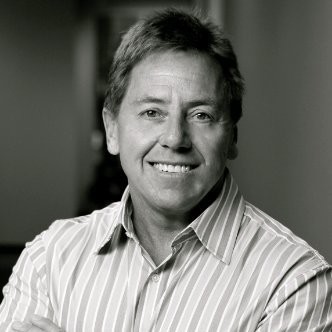Entrepreneur Case Studies
Smart City Use Cases and Opportunities: Jay Chandan, CEO of Gorilla Technology (Part 1)

Jay talks about Gorilla’s Smart City system integration business that heavily focuses on IoT security, analytics, and workflow. In the end, we discuss open problems that could warrant new entrepreneurs building startups around.
Sramana Mitra: Let’s start at the very beginning of your journey. Where are you from? Where were you born and raised? What kind of background?
>>>Business Model Innovation in Digital Health: Bob Allison, Co-Founder of PEAR Health Labs (Part 7)
Sramana Mitra: What is the financial engineering that makes all this possible?
Bob Allison: They were cash and stock, but mostly stock. We used valuation methodologies and acquired the companies usually in their 100% state, so we didn’t eliminate people and would just buy the tech. We typically bought the people because we thought they were important to delivering expertise.
>>>Business Model Innovation in Digital Health: Bob Allison, Co-Founder of PEAR Health Labs (Part 6)
Sramana Mitra: This is also very interesting from a technology entrepreneur’s point of view. Let’s say you focus on one of these specific use cases and you want to build a full-stack product to bring to market. That is a very dangerous path because it’s very expensive.
Very often, the people who have the technical expertise don’t have the B2C marketing expertise. Going with the credibility and the existing brand and feeding your technology expertise into the hands of people who do have that marketing expertise and brand presence is a very interesting way to go to market.
>>>Business Model Innovation in Digital Health: Bob Allison, Co-Founder of PEAR Health Labs (Part 5)
Sramana Mitra: The business model is a development fee upfront. Then there’s a $1 to $2 royalty per user per month. That’s variable and it goes up and down. In some cases, the brands were charging for their app. In some cases, the app is free.
Bob Allison: Yes. I would say that we had some real lessons from all this. One was that big brands are often not that good at digital discussions with consumers. Large technical brands, even New Balance because they’re technical about their shoes, have their own issues about getting to real traction and a pretty low threshold for patience on their side. If you’re telling your CEO that sales are off and you’re spending $500,000 on digital solutions. They’ll say, “Why are we doing that?”
>>>Business Model Innovation in Digital Health: Bob Allison, Co-Founder of PEAR Health Labs (Part 4)
Sramana Mitra: Which brands did you go after?
Bob Allison: We built for Intel. We also built stuff for Bose, Life Fitness, and New Balance. We were building app experiences around training for these brands. We did TRX. The whole list probably had 25 brands.
Sramana Mitra: Can you double-click down on the business model? What I like about this is, very often, we see business ideas that are going to be super expensive to go to market as a B2C company. With the business model that you have pursued successfully, if you follow that route, you can go-to-market by piggybacking on other people’s brands and marketing dollars. Talk to me about the business model.
>>>Business Model Innovation in Digital Health: Bob Allison, Co-Founder of PEAR Health Labs (Part 3)
Sramana Mitra: How did you do the Bluetooth piece?
Bob Allison: When Bluetooth came out, we started the piece that was Bluetooth. Originally, there wasn’t any Bluetooth; it was a direct connection only. You would take your dongle from your computer, plug it into our little radio, and you would import your music file.
Sramana Mitra: You were selling a device?
Bob Allison: Right.
>>>Business Model Innovation in Digital Health: Bob Allison, Co-Founder of PEAR Health Labs (Part 2)
Sramana Mitra: What happens next?
Bob Allison: If I’d sold it for $200 million then, I’d have a different storyline. One of the things I didn’t know very well at that time was how to value my business. We did an exchange. There was some cash. It was primarily stock. In 1990, there was a big collapse in the marketplace. That affected Mimic. After that, I went to work for Aero Electronics.
>>>Business Model Innovation in Digital Health: Bob Allison, Co-Founder of PEAR Health Labs (Part 1)

Bob has a background in semiconductors where the key business model for selling chips is getting them into design wins. In PEAR, Bob has parlayed this model into a platform business catering to many top brands who bring Digital Health products to market on their platform.
There is a lot to learn for entrepreneurs from this case study about a unique and relevant go-to-market strategy, as software eats the world, and ALL companies have to now become tech companies.
>>>